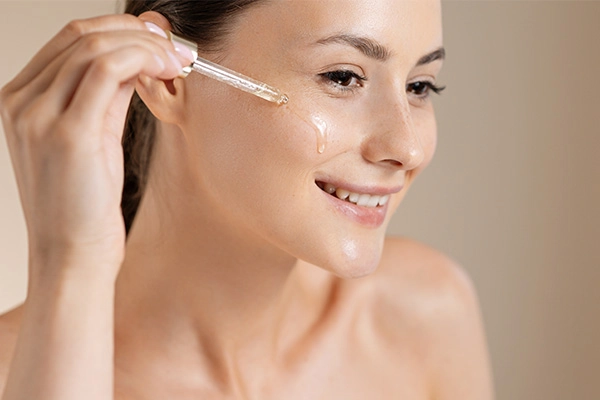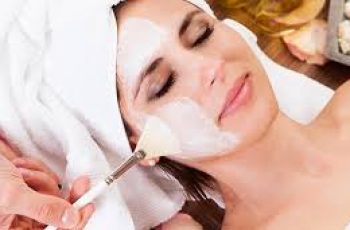Can retinol be used with ferulic acid?
Our blog posts have provided some lessons on mixing skincare products, and today we are adding another post to the series. Before we begin, let me say that even the most experienced skincare enthusiasts often get confused by the ever-expanding selection of ingredients, especially when their names are hard to pronounce.
It’s not just the names that confuse us a bit, you’ll find that skincare formulas are more advanced than ever before thanks to modern technology. This means that there are layers to consider when applying ingredients. It’s no longer about applying from the thinnest to the thickest consistency, but rather focusing on the active ingredients themselves and how they interact with each other. So before you slather your skin with the latest trendy ingredient, wait because even if you use it in the right order, it may not fit into your existing routine. Don’t worry anymore because this is the topic we will be discussing in today’s blog. So stay tuned for more information on using retinol and ferulic acid.
The next section will give a brief summary of what these ingredients do for your skin and what their benefits are. If you are confident about this, you can move on to the next section.
What is ferulic acid?
Ferulic acid is an antioxidant found primarily in anti-aging skincare products and dietary supplements, and is naturally found in certain foods such as oats, rice, eggplant, and bran. Not only does ferulic acid protect against damage caused by exposure to free radicals (such as UV rays, central heating, and pollution), it also enhances the effectiveness of other antioxidants (such as vitamins A, E, and C) on the skin.
The combination of ferulic acid and vitamin C is considered a highly effective skincare powerhouse. This is because ferulic acid stabilizes vitamin C while enhancing its ability to minimize sun damage by boosting photoprotection.
The main benefits of ferulic acid are its antioxidant properties, which can protect the skin from free radicals, repair existing damage on the skin’s surface, and reverse signs of aging by reducing the appearance of fine lines and wrinkles. All of this generally improves the overall health and radiance of the complexion.
There’s more information on ferulic acid on Skin School, so stop by to learn more.
What is Retinol?
We’ve all heard the word retinol before, and either it’s already a staple in your skincare routine or it’s an ingredient you avoid like the plague because the name alone is so scary.
Retinol is a form of vitamin A and is considered one of the most potent ingredients in skincare. It occurs naturally in the skin, and its production tapers off after the age of 25. This powerhouse boosts skin cell turnover and increases collagen production, making skin appear firmer, tighter, and younger. Not only does retinol fight the signs of skin aging, it also fights existing skin damage caused by sun exposure.
As effective as retinol is at improving your skin, it’s a highly potent ingredient that can cause some side effects if not used correctly. It’s important to introduce retinol into your daily routine slowly to avoid increased redness, itching, irritation, and discomfort. Learn more about retinol and its effects on your skin in our blog post.
Now that you’ve brushed up on both ingredients, let’s learn more about their uses together.
Can I use retinol with ferulic acid?
Yes, you can. In fact, using these ingredients together creates an incredible combination. When layered, retinol and ferulic acid can enhance each other’s benefits to the skin. Retinol can even out skin tone and increase firmness, while ferulic acid helps retinol penetrate deeper into the deeper layers of the skin and boost collagen production. When these two powerful ingredients complement each other, you’ll get a radiant, healthy, even-toned complexion.
What can ferulic acid be used with?
The main benefit of ferulic acid is that it can be effectively combined with other ingredients, but can enhance them and make them even more effective. Look for product formulas that contain other antioxidant ingredients like vitamin C and vitamin E.
Because ferulic acid can be effectively combined with other ingredients, it’s important to remember that introducing new skincare ingredients should only be done after consulting with a doctor or dermatologist. Here’s how to make sure you’re using the ingredients that work best for you and your skincare needs.
Which acid works best with retinol?
Blended acids like hyaluronic acid can even out skin tone and allow retinol to work on the skin without drying it out or irritating it. This is thanks to hyaluronic acid’s hydrating properties and its ability to attract and lock in moisture to the skin.
If retinol is not used, other more potent ingredients such as glycolic acid, salicylic acid, and lactic acid should be used. The peeling effects of these acids combined with the increased stimulation of skin cell turnover can be too much for the skin. This can create an imbalance in skin pH and lead to a loss of oils in the skin, causing irritation, redness, flaking, and general discomfort.
Can I use retinol every night?
Yes, you can eventually, but only after you build up your skin’s tolerance. The effectiveness and formulation of the product also play a big role in how often you should use retinol.
To begin with, it’s best to use retinol once or twice a week in your evening routine. After a while, many people find that they can use it every night. This depends a lot on your skin type and the product. Ideally, retinol should be used every other night. This ensures that it delivers results without causing unwanted side effects.
Below is more information about these powerful ingredients and how to use retinol with ferulic acid. If you have any additional questions, feel free to visit us on Instagram.
DQH Knowledge drop: In your 20s, your skin cell turnover decreases. (Cell turnover is a key component in keeping your skin youthful.) You know what else slows down? Your collagen production. Starting in your 20s, collagen decreases by about 1 percent per year. Should you want to prevent fine lines and wrinkles, start by eliminating behaviors that contribute to premature aging. “If it’s bad for you, it’s bad for your skin,” says dermatologist Michel Somenek.
“Cigarette smoking reduces blood flow to the skin and causes premature wrinkling and a dull skin texture. Making the repeated pursed motion to inhale can also cause smoker’s lines. Alcohol and recreational drugs are toxins for the skin that damage its cellular structure and DNA,” Somenek tells us. “The faster you eliminate vices while you are young, the better chance your skin and body have to recuperate.” Also, adopting an anti-aging routine in your 20s is key. After all, the best offense is a good defense. We spoke to Somenek and experts Joshua Ross and Audrey Kunin to find out more.
Keep reading for the best anti-aging products for your 20s, according to skincare professionals.
Sunscreen
“We all know that the sun is the number one cause of skin aging and starting the prevention in your 20s is very important,” Ross says. “The majority of your sun damage won’t start to appear until you’re in your 30s, so don’t wait until you see it surface or you’ll be behind the curve. Stay ahead of it with a good-quality zinc-based sunscreen worn daily.”
Farmacy Green Defense Daily Mineral Sunscreen
An invisible sunscreen with SPF 30, plus botanical extracts meant to protect skin with tons of antioxidants. Bonus: It’s clean and fine to use under makeup.
Bareminerals Complexion Rescue™ Tinted Moisturizer Broad Spectrum SPF 30
Although we recommend you use your SPF and moisturizer separately, we also understand moments when you don’t have time or energy for that extra step. For those times, this bareMinerals moisturizer is a great thing to have on hand.
Vitamin C Serum
“A great introduction to anti-aging is to start with a vitamin C serum in your morning skincare routine,” Ross says. “It’s a powerful antioxidant that will neutralize free radicals and brighten the skin.” He adds that it’s a great way to counteract the effects of the sun’s harmful rays, which, as previously mentioned, are among the biggest causes of premature aging.
Drunk Elephant C-Firma™ Vitamin C Day Serum
The Drunk Elephant C-Firma is a lightweight serum that promises to give skin a glow by combining the brightening powers of vitamin C with ferulic acid, l-ascorbic acid, and vitamin E. The included sodium hyaluronate is meant to replace hydration loss, so you shouldn’t have to deal with any irritation.
Sunday Riley C.E.O. Rapid Flash Brightening Serum
This potent serum is jam-packed with vitamin C (15 percent, to be exact), which means it’s a potential superstar at both brightening skin and dousing it in antioxidants.
Peptides
Using peptides on your skin has many benefits, says Somenek. “The skin barrier is what defends the body against pollution, UV rays, bacteria, and toxins. It can be damaged by several everyday factors. Using topical peptides aids in building a stronger barrier,” he says. “Peptides comprise elastic fibers, which are a type of protein. These fibers help to make skin appear taut and firm. Peptides can also help repair damaged skin, relieve inflammation, and even out skin tone. Some peptides can kill acne-causing bacteria that is common in 20-somethings.”
Kunin agrees, saying, “Peptides are an excellent entry point for supporting collagen.” She recommends looking for face and eye treatments that contain these collagen-boosting powerhouses.
Charlotte Tilbury Magic Eye Rescue Cream
This Charlotte Tilbury super-emollient eye cream has a base of coconut oil and shea butter (read: it’s incredibly hydrating). Botanicals plus peptides are meant to help reduce dark circles and boost collagen, respectively.
This creamy moisturizer serves up potent collagen-boosting peptides and pycnogenol, and antioxidant-rich vitamin C. “Instead of sitting on top of the skin, peptides penetrate the outer layer so they go deep. The ‘signals’ they send tell the cells to produce elastin and collagen, which are needed for youthful-looking skin,” explains Somenek.
At-Home Peel Pads
Remember that skin cell turnover fiasco we talked about earlier? One way to help support it is by exfoliating. “Exfoliation is important to help keep skin fresh and luminous,” Kunin says. She recommends using at-home peel pads as an easy and effective way to exfoliate.
“The goal in your 20s is to fight the slowing pace of cell turnover. It is wise to use products that gently exfoliate, yet still remove oil and other impurities. Products that have Alpha Hydroxy Acids (AHA) or Beta Hydroxy Acids (BHA) are a good choice.”
According to Somenek, you should only exfoliate two to three times a week. “People of all ages are guilty of over-exfoliating and that can be too much of a good thing,” he says.
Dermadoctor Kakadu C Intensive Vitamin C Peel Pad
A few swipes of this Derma Doctor powerful peel pad promise to leave your skin glowing and smooth, thanks to the seven (yes, seven) types of chemical exfoliants, including AHA and BHA. It also contains vitamin C via Kakadu plum extract for added brightening and antioxidant protection.
KEY INGREDIENTS Kakadu plum extract is sourced from the Kakadu plum, a fruit grown in northern Australia. It contains vitamin C, which restores the skin’s natural barrier, increases collagen production, and soothes irritation.
Dr. Dennis Gross Skincare Alpha Beta® Universal Daily Peel Pads
These are the gold standard of peel pads, with a cult following and over 900 five-star reviews on Sephora. They’re easy to use and contain a blend of anti-aging exfoliating acids.
Emollient Night Cream
“In your 20s, you need to start upping the hydration in your skincare routine. You may have been cautious of over-moisturizing because of acne in your teens, but as you enter your 20s, your skin transitions and becomes drier,” Ross says. “I recommend an emollient night cream added into your evening skincare regimen.”
“Twenty-somethings need to make sure that they are not using creams that will clog their pores and cause excess oil production,” says Somenek. Opt for non-comedogenic products.
Cerave Skin Renewing Night Cream
One great choice is the CeraVe Skin Renewing Night Cream, which is a non-comedogenic night cream that leaves skin soft and glowy. It combines the moisturizing powers of ceramides and hyaluronic acid.
RoC Retinol Correxion Max Hydration Creme
“The best night cream ingredients contain retinol, benzoyl peroxide, and/or salicylic acid or hyaluronic acid. The goal is to moisturize, yet remove excess oil,” says Somenek. This Roc Retinol Correxion cream fits the bill as it contains both hyaluronic acid and retinol so it promises to moisturize while also being non-comedogenic.



